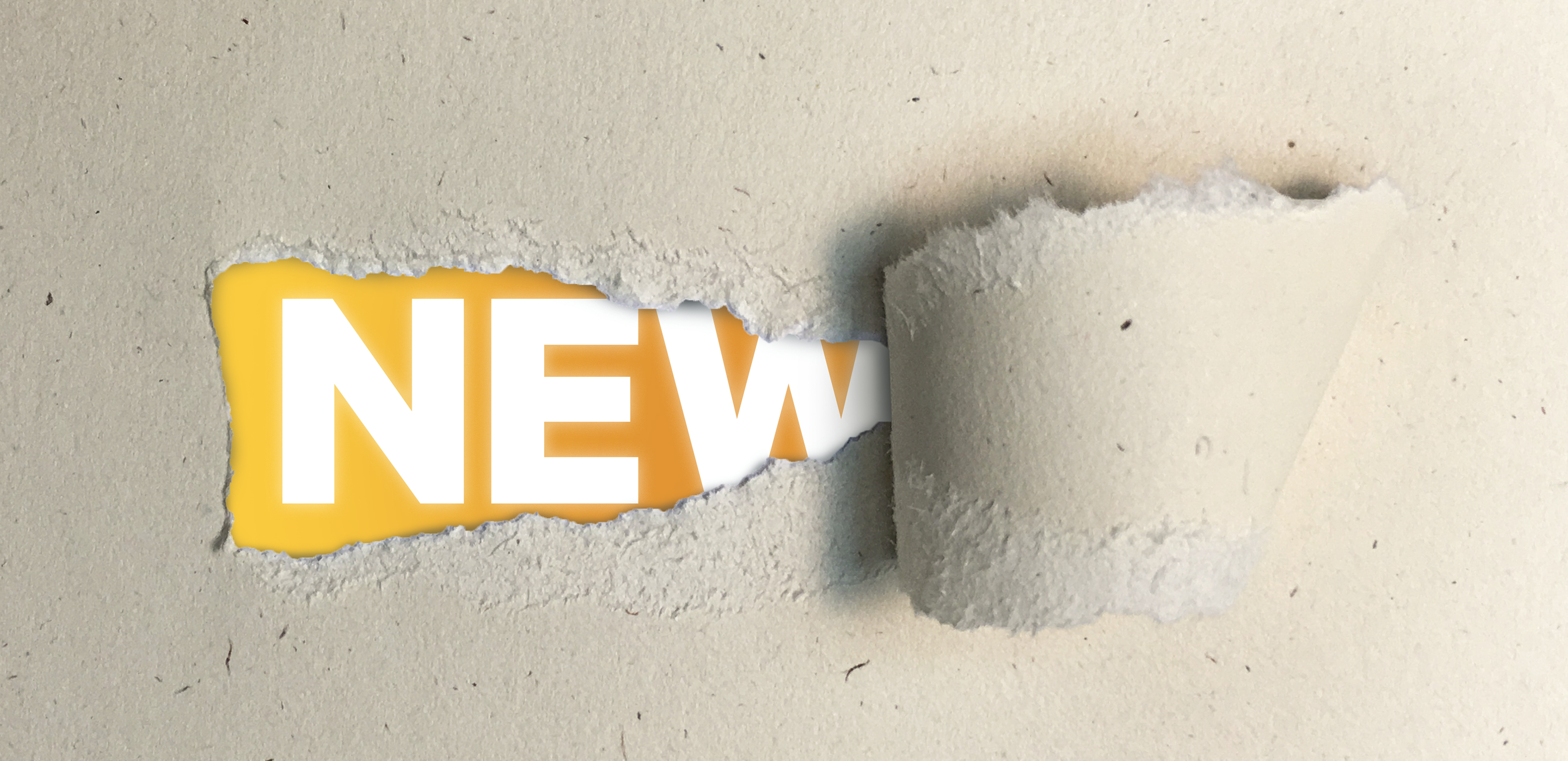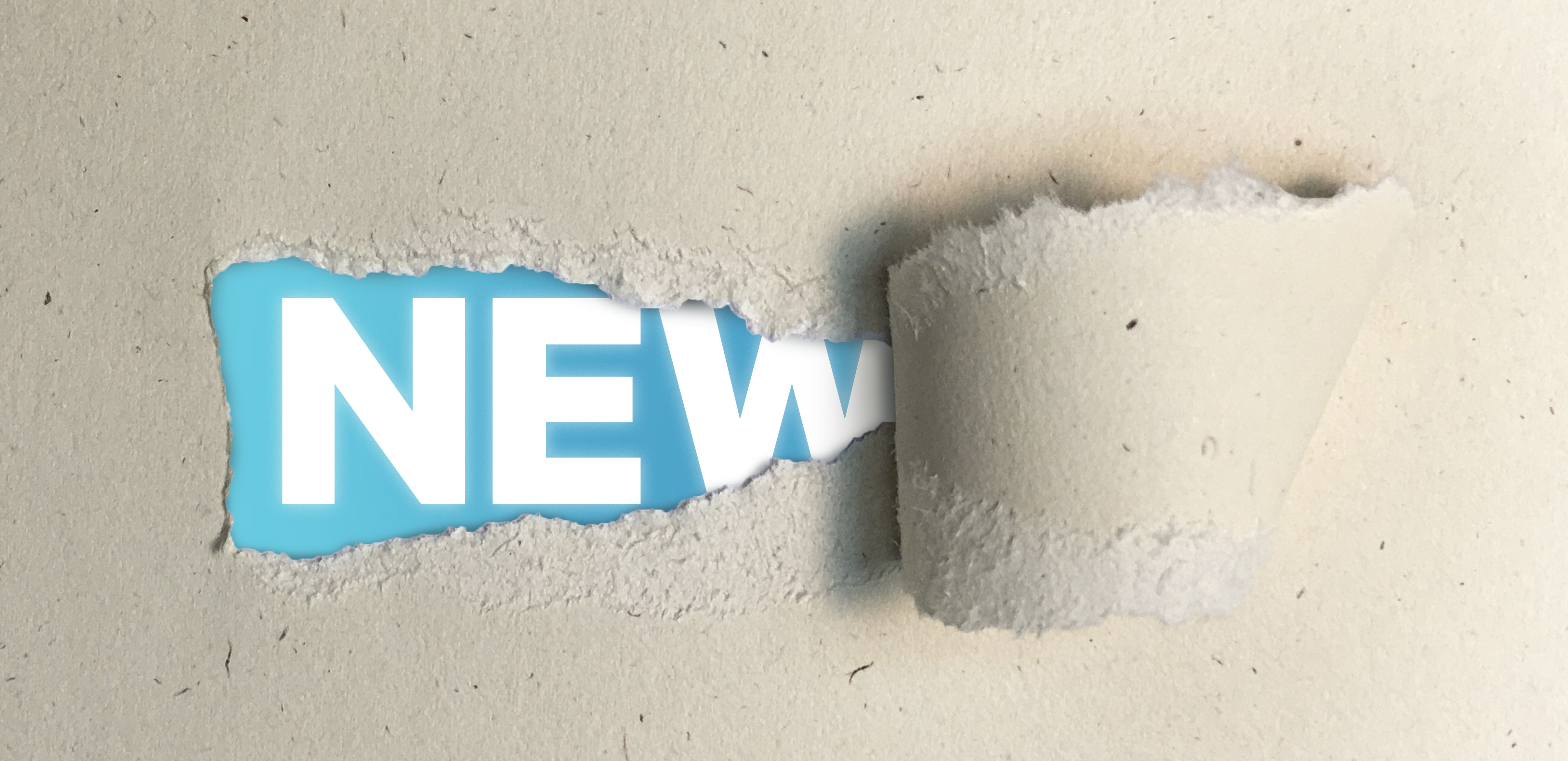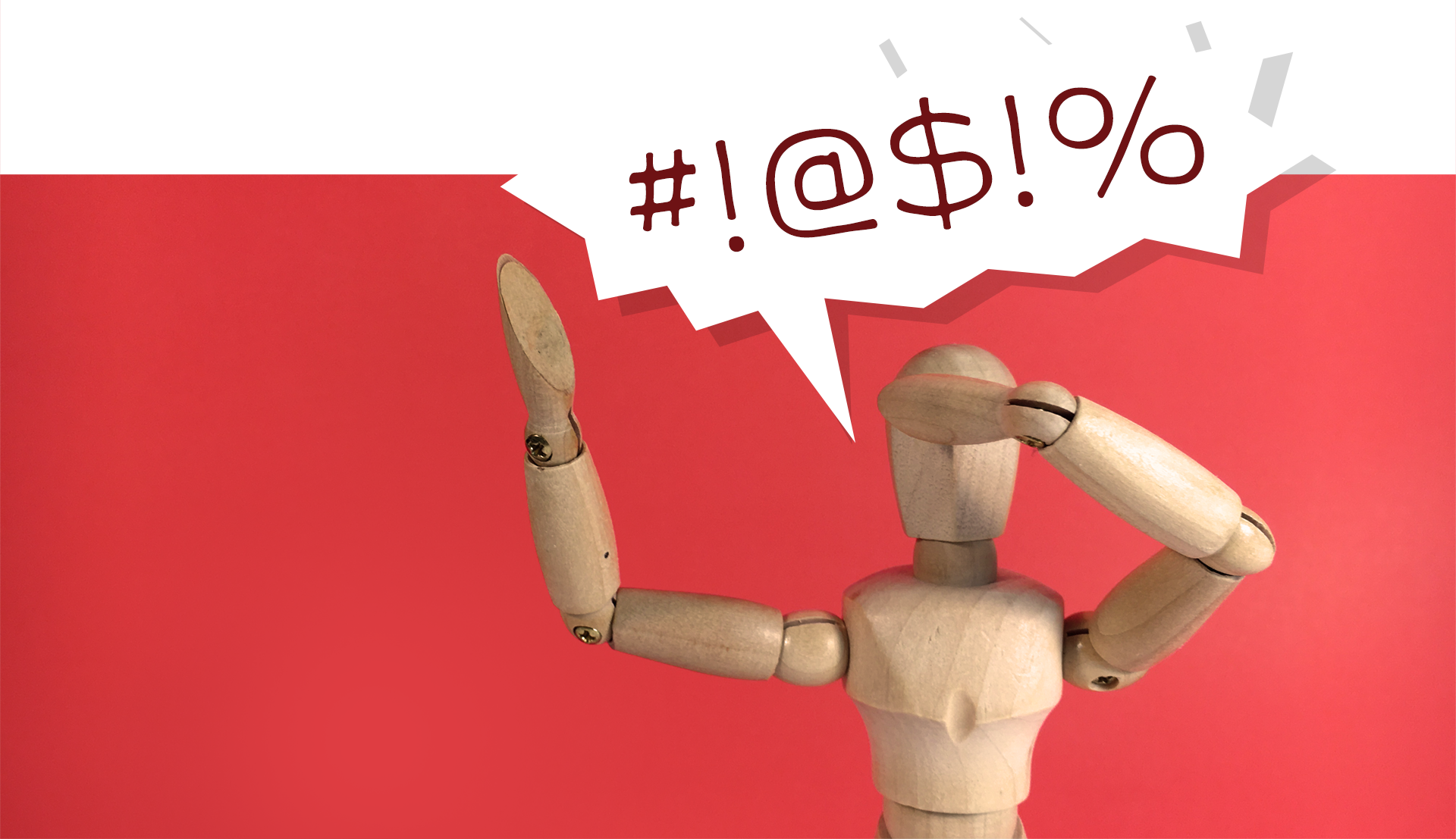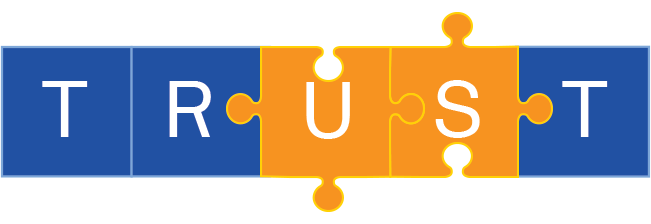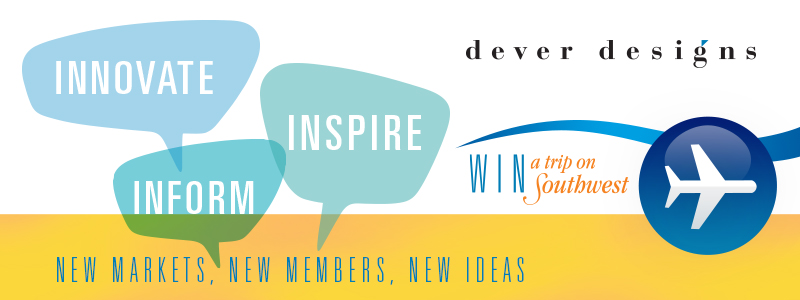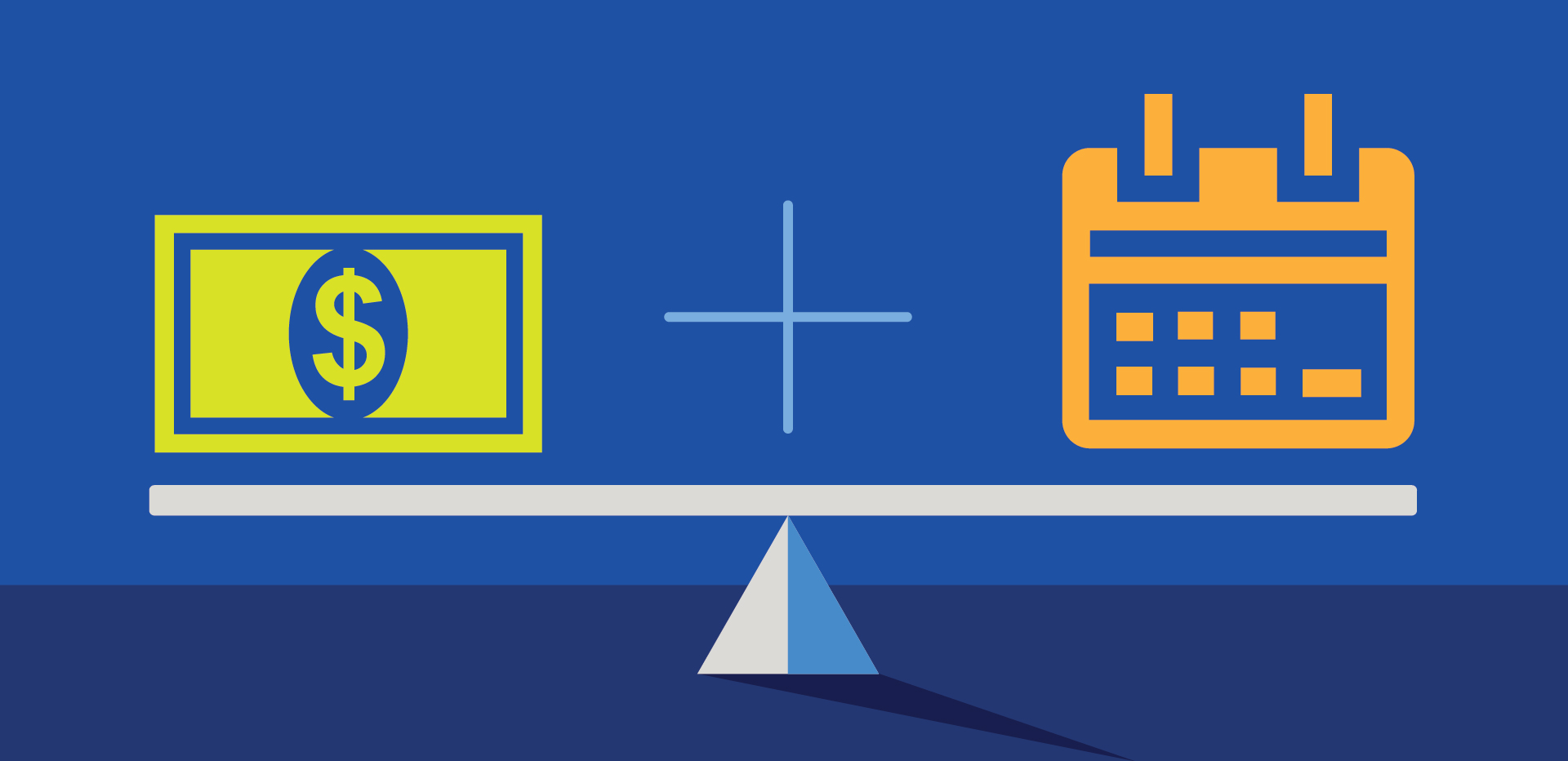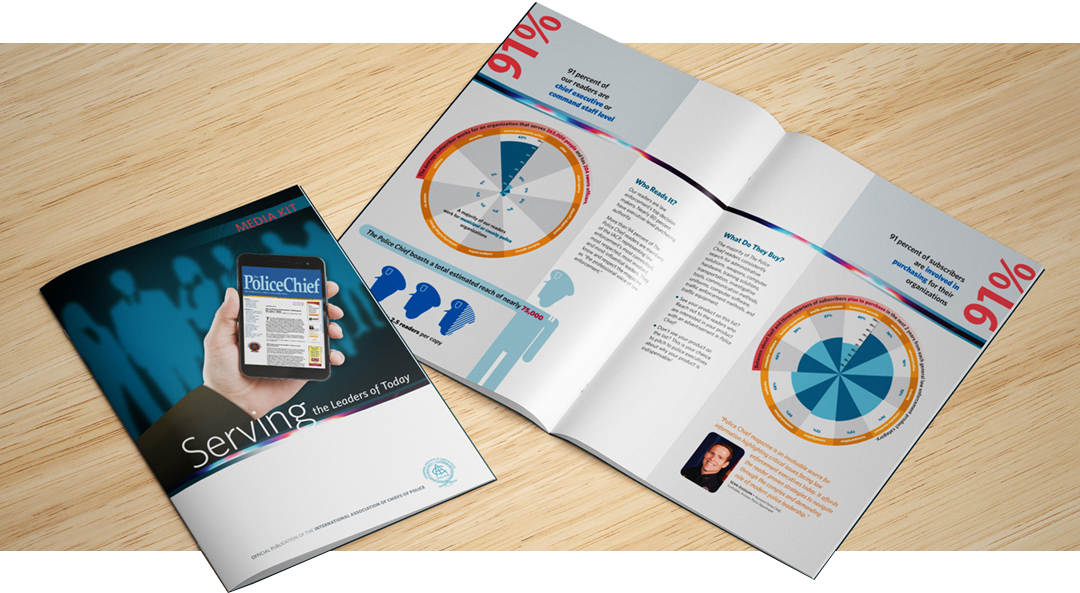
You’ve all heard the saying, “less is more.” It’s a useful concept in the world of graphic design and one we have often applied to best serve our clients.
When we were hired by the International Association of Chiefs of Police (IACP) to design their new media kit, one of the first things to be addressed was the text-heavy nature of the content. Too many words made the information seem overwhelming and left little room for visual relief. Paring down the text allowed us to repackage the most salient points as
• Interesting Statistics
• Colorful Infographics and
• Powerful Testimonials
The updated presentation improved the overall clarity of their messaging and better engaged readers and advertisers.
Removing all dates and time-sensitive material from the main portion of the kit gave the piece a multi-year shelf life; date-specific information was presented in a separate rate card housed in a pocket at the back of the kit. This approach enabled us to provide our client with additional cost savings by not forcing them to update the entire media kit annually.
While this redesign was not intended to be a complete rebranding effort, our client did share the challenges they faced in having many different departments that each presented their own look and feel. So, working within our budget, we designed this kit with imagery and visual cues that served as a foundation on which they could build their brand. For example, photographs of flashing police cruiser lights were manipulated and cropped to transform a literal symbol of policing into an abstract texture with color and energy. Using this art as a gradient stripe elevated a traditional visual into something less intimidating and more modern. Repurposing the various elements and colors in other applications helped establish a sense of cohesiveness in subsequent IACP messaging.
The overall result? We transformed an information-heavy piece into an attractive and engaging kit and set the stage for a stronger, more enduring brand.
Check out what we did for the IACP here. To see what Dever Designs can do for you, give us a call at 301-776-2812.
